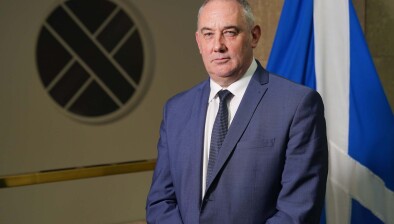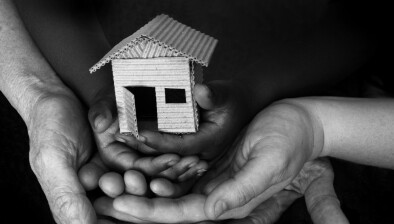Paisley’s Ferguslie Park named as Scotland’s most deprived area

A new Scottish Government publication into deprivation has identified Ferguslie Park in Paisley as the most deprived area of Scotland.
Published every four years, the Scottish Index of Multiple Deprivation (SIMD) ranks almost 7,000 small areas across the country using standards such as income, employability and health.
Ferguslie Park was found to be the most deprived area for the second successive time while Lower Whitecraigs in East Renfrewshire was classed as the least deprived.
According to the findings, eleven council areas now have a larger share of deprivation compared with the previous SIMD in 2012, while ten councils have a smaller share of deprivation.
Glasgow has 56 of the 100 most deprived areas, down five on 2012, and has six of the top ten.
West Dunbartonshire and Midlothian have experienced the largest rises in local share of deprivation with Aberdeen City and Clackmannanshire experiencing the largest decreases.
Other areas with high levels of deprivation that have seen a decrease in their local share are Dundee City and Inverclyde councils.
The index combines data from across the UK and Scottish governments, police and the NHS and is promoted across a range of groups to use the statistics to benefit communities.
It is used to help the Scottish Government, local authorities, the NHS and the third sector target investment and policies and forms part of the Scottish Government’s commitment to making information as open and transparent as possible.
Although it is important to identify pockets of multiple deprivation, it is also important to note that SIMD is not in itself a map of places where people in poverty live. Two in every three people living with income deprivation do not live in deprived areas.
Renfrewshire Council said statistics labelling part of Paisley as Scotland’s most deprived neighbourhood do not tell the full story and that a long-term plan to change the area’s fortunes is already under way.
Council leader Mark Macmillan said: “The council has adopted an innovative approach to tackling poverty, recognised as leading the way in Scotland - and the SIMD stats are based on data from last year which does not fully capture the impact of that.
“The figures show the overall picture for Renfrewshire has improved and we believe we are making a difference on the ground.”
He added: “In the four years since the last SIMD figures were released, Renfrewshire has seen a 10 per cent real-terms drop in the cash coming our way from Holyrood.
“It’s also worth saying Ferguslie itself has a strong sense of community - a recent survey showed 47 per cent of people rated it as a very good place to live.
“The deprivation issues affecting Ferguslie and similar areas are long-term and deep-rooted - there are no easy solutions but through our unique approach, we believe we are on the right track.”
Communities secretary Angela Constance said the publication shows the “significant long-term challenge” of tackling deprivation.
Ms Constance added: “The SIMD is important – and widely used in both the public and third sectors – because it clearly sets out where the most deprived areas in Scotland are, so we can ensure public funding, policies and services can be targeted most effectively.
“While changes in methodology mean it’s not possible to compare directly with previous years, SIMD is always a good reminder of why Scotland needs a government committed to tackling deep seated deprivation, poverty and inequalities.
“This will not be an easy job while we do not have the full levers of power, but I am determined we take on the challenge of making a generational change for those areas that have been in poverty for too long. In the face of continuing UK government welfare cuts, an austerity agenda and attempts to take Scotland out of Europe, this will continue to be a long-term challenge.
“We are spending £100 million protecting people against the worst effects of welfare reform and every pound spent on mitigation measures is a pound less that can be spent on lifting people out of poverty.”
Citizens Advice Scotland (CAS), which yesterday published its own report showing how many Scots on lower incomes have to pay above average costs for basic services like energy, telecoms, loans and insurance, said the Deprivation Index further underlines the impact that these cycles of poverty can have on individuals and on whole communities.
CAS spokesman Patrick Hogan said: “Research like this helps to build a picture of which people are most in need and where we need to target help. However, it’s important to remember that measuring deprivation is a complex process. Not everyone who lives in a deprived area is in fact deprived, and not everyone who is deprived lives in a deprived area. Rural poverty, for example, is often harder to measure and so can be missed by research like this.
“The important thing is to make sure that help is available for all those who are struggling, regardless of where they live. There is a role here for governments at all levels, and also for community groups and the voluntary sector. The CAB service is always on hand to give free, expert advice to anyone who is in financial difficulty. We have CABs in all of the areas mentioned in the report, and right across Scotland, and our advisers are ready to help people every day.”
The 10 most deprived areas in Scotland:
The 10 least deprived areas in Scotland:









